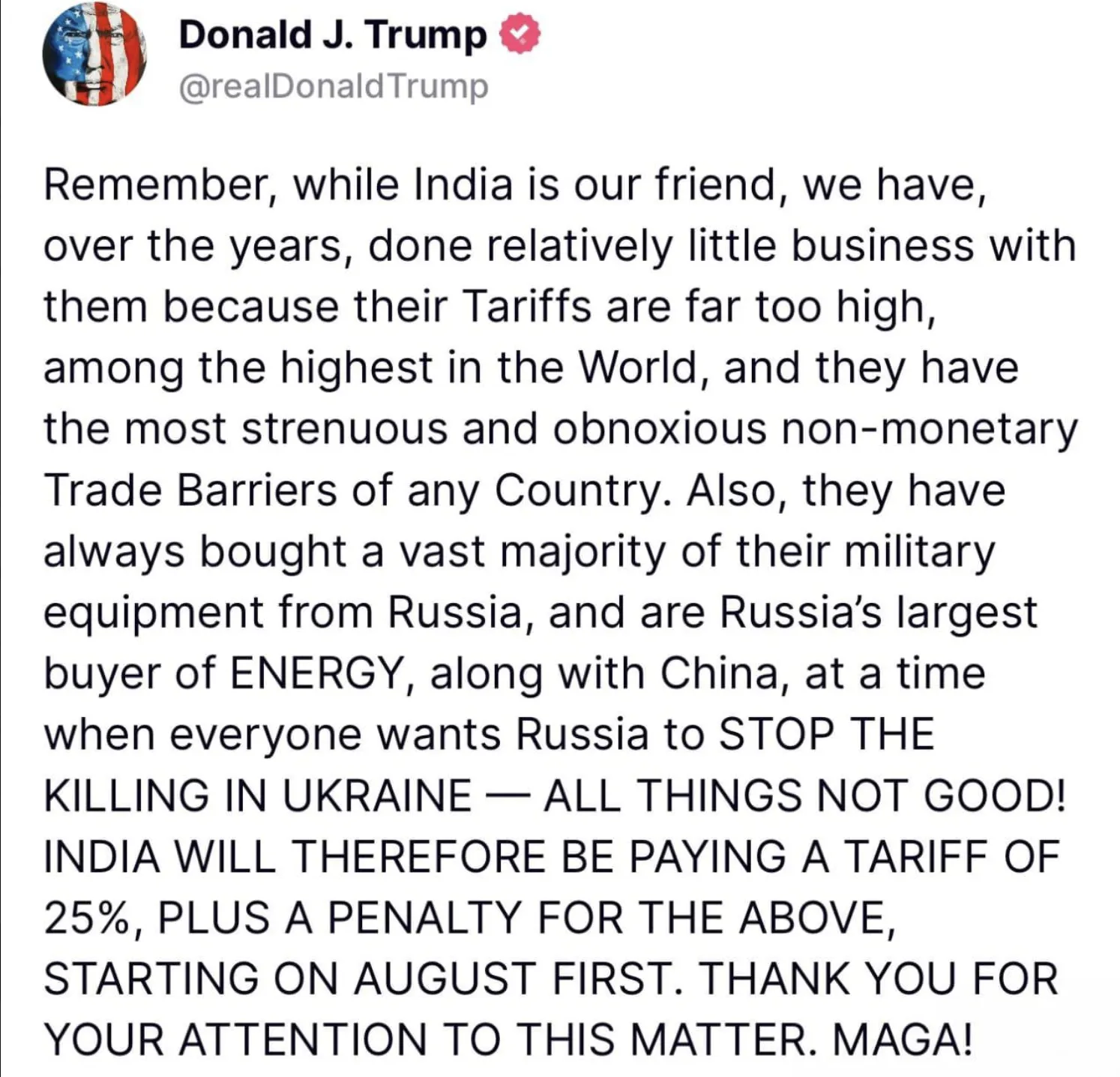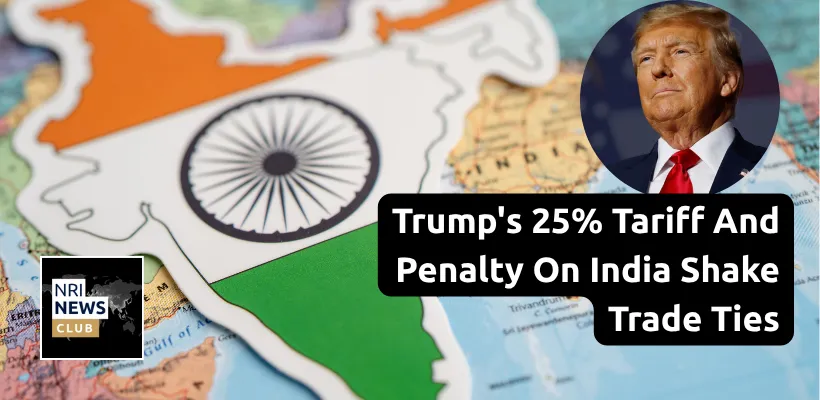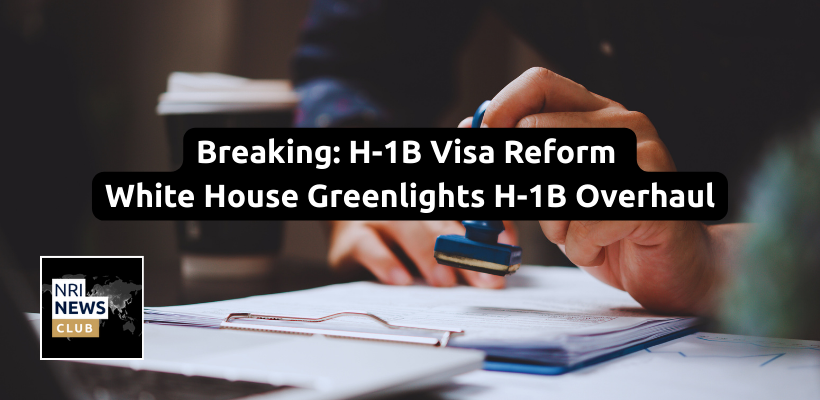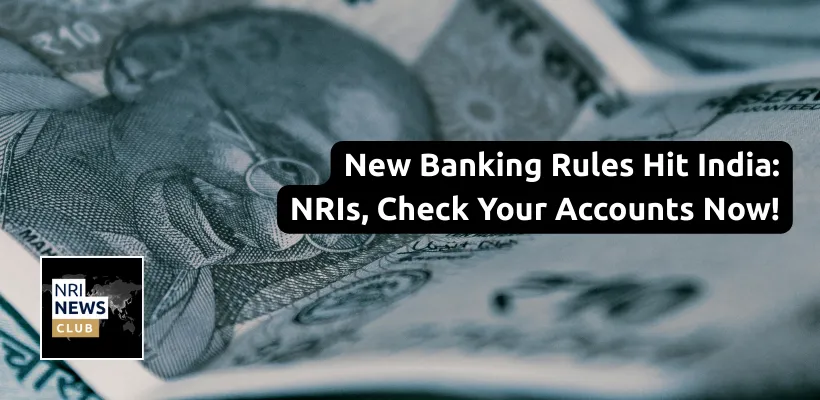On July 30, 2025, US President Donald Trump announced a 25% tariff on Indian goods, effective August 1, 2025, alongside an unspecified penalty for India’s continued trade with Russia. This decision, revealed on Truth Social, escalates tensions in US-India trade relations and has far-reaching implications for Non-Resident Indians (NRIs), the Indian economy, and global geopolitics.
The Announcement Unveiled

Trump’s latest move targets India’s $45.8 billion trade surplus with the US and its purchases of Russian energy and military equipment. The 25% tariff, slightly reduced from an earlier threat of 26% in April 2025, applies to all Indian imports starting in just two days. The additional penalty aims to pressure India over its neutral stance on Russia’s war in Ukraine, particularly its imports of discounted Russian oil and arms.
This follows months of stalled negotiations for a US-India Bilateral Trade Agreement (BTA). Despite five rounds of talks and a planned US trade team visit in August, no breakthrough has been achieved. Trump’s “reciprocal tariff” policy now places India in a higher tariff bracket than nations like Vietnam (20%) and Indonesia (19%).
India’s Response and Economic Fallout
The Indian government has responded cautiously. The Ministry of Commerce and Industry said it is “studying the implications” while reaffirming its commitment to a “fair, balanced, and mutually beneficial” trade deal. However, the sudden tariff hike leaves little time for preparation.
For India’s economy, the stakes are high:
-
Export Hit: Key sectors like textiles, pharmaceuticals, and IT services, major contributors to India’s $120 billion annual exports to the US, face higher costs and reduced competitiveness. This could ripple through the tech sector, where NRIs are already navigating challenges like Trump’s push to halt hiring in India.
Read our story on Trump Urges Tech Giants to Halt Hiring in India.
-
Energy Dilemma: The penalty on Russian trade could force India to pivot to pricier energy sources, driving up domestic costs.
What It Means for NRIs
For the NRI community, particularly in the US, the tariffs and penalty could ripple through personal and financial lives:
-
Rising Costs: Indian goods like spices, clothing, and jewelry will become more expensive, straining budgets for NRIs maintaining cultural ties. This adds to the dampened shopping experience many are already feeling.
Read more on Rising Tariffs Dampen Shopping Experience for NRIs in the USA.
-
Remittance Worries: A potential Rupee depreciation could shrink the value of remittances, a lifeline for many Indian families. However, the US Senate’s remittance tax reduction offers some relief.
-
Business and Jobs: NRIs running import-export businesses or working in trade-related sectors may face new challenges, compounded by uncertainties in H-1B visa reforms and visa interview requirements.
Read more on H-1B Visa Reform: Shift to Wage-Based Selection Sparks Debate in 2025
Read about U.S. Visa Interview Waiver Rules Tightened: What H-1B and Other Visa Holders Need to Know
Geopolitical Tightrope
The tariffs spotlight India’s delicate balancing act. While strengthening ties with the US, India maintains deep economic links with Russia. Trump’s penalty threatens this equilibrium, potentially straining the US-India partnership at a time when countering China remains a shared goal. This comes as Trump urges tech giants to halt hiring in India, adding another layer of complexity for NRIs in tech.
Looking Ahead
With the August 1 deadline approaching, India’s next steps, whether retaliation, negotiation, or compliance, remain unclear. For NRIs, staying informed is key as trade tensions could intersect with 2025 tax changes and immigration delays.
NRI News Club will keep you posted on this unfolding story. How do you see this impacting your life? Join the conversation on our Reddit Community!






